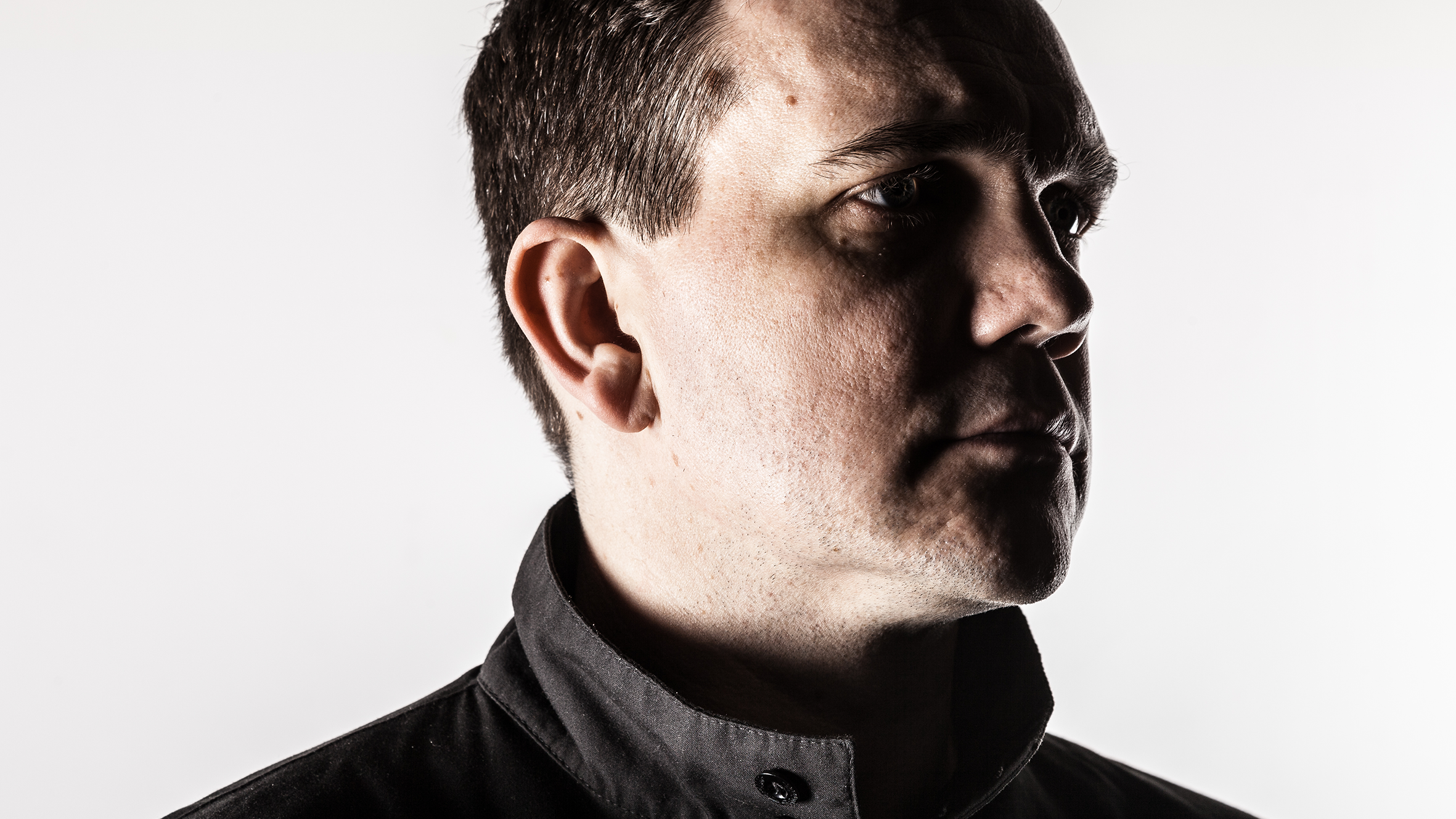Perc: 5 things I've learned about music production
The techno producer talks us through five essential production tips, covering kick layering, sidechain buildups and the perils of over-EQing

A mainstay of the UK techno scene, Perc has been pushing the genre forward for almost 20 years, folding influences from noise, drone and industrial music into driven 4/4 constructions that flirt with experimentation without losing sight of the music's raison dêtre - to make people dance.
Perc's latest EP is a three-track collection of typically vigorous head-spinners that sees the producer stripping his ideas down to a handful of potent elements that squeeze maximalist intensity into a minimalist package. Following the record's release, we sat down with Perc to hear his five essential pieces of advice for music production, covering kick layering, sidechain buildups and the dangers of over-EQing.
1. Analogue before digital
“I'm no purist and I use a mixture of analogue and digital processing from free plugins and cheap second-hand guitar pedals to more expensive circuit modelled plugins and valve rack units. It might just be me but I've found that running a signal out of my computer through the analogue gear and then into a chain of plugins always works better than the other way round.
“I think the analogue gear colours the signal and takes the digital edge off it before the really precise control of the plugins comes into play. I use Ableton Live and have all my external hardware effects set up using saved External Audio Effect routings so it's easy for me to switch around the order of a chain of effects as I experiment with a sound.”
2. The sidechain build-up trick
“I don't use a lot of risers or effects build-ups when going into a breakdown of a track, but if I want an increase in intensity of an arrangement before a breakdown I automate the ratio controls of all the tracks that are sidechain compressed off the kick. So as the track approaches a break I automate the ratio controls of all the compressors slowly down to 1:1.
Kick drums made up of six or even eight layers would often sound great in the studio but terrible when testing the track in the club
“This reduces the sidechain effect and separation of the tracks and gradually increases their volume as well. It makes the track just a little bit more chaotic and messy as you get to a break without having to use risers or white noise builds or anything like that (which I dislike). Then as the track kicks back in after the break I automate the ratio controls back to their original setting before the first kick hits.”

3. Be careful stacking kicks
“I used to sometimes lose my focus and build kick drums made up of six or even eight layers and they would often sound great in the studio but terrible when testing the track in the club. Working with Ansome taught me how important it is to make sure all the elements of your kick are in phase and that is something I really watch out for now. I've also reduced how many elements I use for a kick. Two or three layers is the most I'll use now and if the kick isn't working with just a few layers then get rid of it and start again.
Get the MusicRadar Newsletter
Want all the hottest music and gear news, reviews, deals, features and more, direct to your inbox? Sign up here.
“Most of my tracks now just have one kick layer and then maybe a sharp transient like the very start of a closed 909 hi-hat on top of it, but the transient will be high passed filtered at such a high frequency it is nowhere near interfering with the main kick frequencies. I like my transients to be barely noticeable, they should just provide a bit of attack and click to the kick, and like reverb, I only want to notice them when I mute them, not when they are active.”
4. Don't use templates
“I've seen people on YouTube open up their DAW and the kick is already on channel 1, the snares and claps on 2, some kind of bass synth on 3, a lead synth on 4 etc with a reverb on aux 1 and a reverb on aux 2. Yes, this is convenient and if you want to make a track in a few hours it definitely helps. I prefer to start from scratch every time.
Think about every production and engineering decision in relation to that particular sound and its place in the track you are working on
“I think it helps each track sound unique and stops you repeating the same things over and over again. When I open Ableton Live there is a limiter and a plugin to mono the bass frequencies on the master channel, but they are deactivated and that's it. Everything else has to be done from scratch each time and it means I never know which direction I'll go in and I really like that.”
5. Don't EQ the life out of your track
“Years ago I would automatically add a high pass EQ band to every channel that wasn't the kick or bass and to all my aux return tracks. After a while I realised this was making my tracks lifeless and brittle sounding. Cutting frequencies to stop a sound overlapping with the kick is totally fine but doing it as a default action on every channel without stopping to think if it is really necessary can quickly suck all the life and warmth out of a track.
“The takeaway from this is not to fall back on default behaviours and to think about every production and engineering decision in relation to that particular sound and its place in the track you are working on.”



I'm MusicRadar's Tech Editor, working across everything from product news and gear-focused features to artist interviews and tech tutorials. I love electronic music and I'm perpetually fascinated by the tools we use to make it. When I'm not behind my laptop keyboard, you'll probably find me behind a MIDI keyboard, carefully crafting the beginnings of another project that I'll ultimately abandon to the creative graveyard that is my overstuffed hard drive.
“From a music production perspective, I really like a lot of what Equinox is capable of – it’s a shame it's priced for the post-production market”: iZotope Equinox review
"I didn't know you could change the tempo in Pro Tools, so I just made all my songs at 120bpm": Super-producer Benny Blanco reveals the surprising reason why most of his early hits are the same tempo




![PRS Archon Classic and Mark Tremonti MT 15 v2: the newly redesigned tube amps offer a host of new features and tones, with the Alter Bridge guitarist's new lunchbox head [right] featuring the Overdrive channel from his MT 100 head, and there's a half-power switch, too.](https://cdn.mos.cms.futurecdn.net/FD37q5pRLCQDhCpT8y94Zi.jpg)





